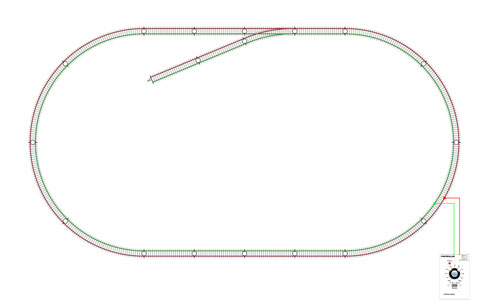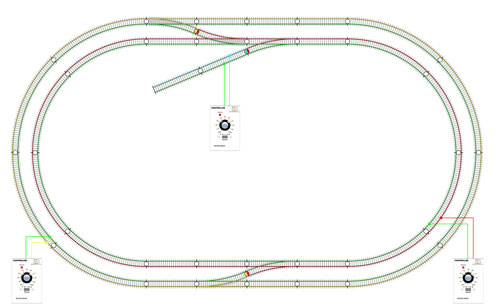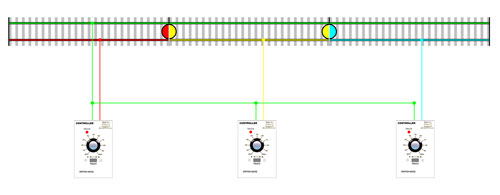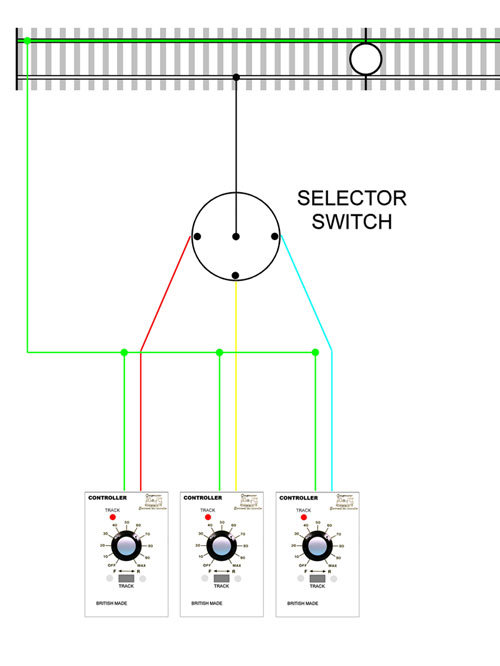|
| OO Scale | N Scale | G Scale | Z Scale | HO Scale | Slot Cars & R⁄C |
| |||||||
|
|||||||
| Home Page | |||||||
| BUY GIFT VOUCHERS | |||||||
| Products | |||||||
| Latest News | |||||||
| RIGHT LINES | |||||||
| Bargains | |||||||
| Downloads | |||||||
| Events | |||||||
| Careers & Jobs | |||||||
| Carriage Services | |||||||
| About Us | |||||||
| Contact Us | |||||||
| Pay Us A Visit | |||||||
| Meet The Staff | |||||||
| Links | |||||||
| SHOPPING BASKET |
Your shopping basket is empty. To add an item, click the "Buy" button
| YOUR ACCOUNT | ||
|
||||
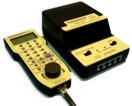 |
||||
| Prodigy Advance Digital System |
||||
| Cased Controllers |
||||
| Panel Mount Controllers |
||||
| Walkabout Controllers |
||||
| Modules & Transformers |
||||
| Scenics & Accessories |
||||
| Wiring & Electrical Components |
||||
| Tiny Signs | ||||
| Tools | ||||
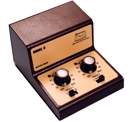 |
||||
| O Scale | Wargaming | Architectural | Narrow Gauge | Tools+ | ||
Layout Control and Common Return
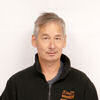
GREG SPEARS explains how to add a Common Return to your layout.
In this article we are going to recap on Layout Control and Common Return wiring so you can get the most from your layout, DCC users are in general exempt from this as they effectively have only one circuit and a single control station or base unit.
One of the first steps in building a layout is often a loop controlled by a single controller, using some form of track connector and possibly an isolating siding etc.
Click image to view larger version
As the layout takes shape the next step might be to add another loop which can be run from the single controller, but if you isolate the inner and outer loop it gives you the option to have them on separate controllers. This is generally done by using plastic rail joiners in place of the standard metal ones between where the two loops meet via points. So that's our basic but very satisfying two loops, with a controller on both giving independent speed and direction.
Click image to view larger version
So from there we could add controllers for separate areas, like the siding, or by splitting the loop(s) to allow different controllers for each section.
How you control your layout or the amount of operators is down to you, and this will become more apparent as the layout develops. In some scenarios there will be one controller for a specific area and in others all sections can be controlled by any controller. All Gaugemaster Analogue controllers have what's known as independent windings, which means that all track outputs are independent from each other and suitable for common return. If you are using single track controllers with dedicated power supplies then they should be compatible, but if using other manufacturer's multi-track controllers please check for suitability.
If you had two sections and two controllers you could simply put plastic isolators in place of the rail joiners and run a feed to each section. This will work but on occasion you will find some locomotives are prone to stalling over the isolated joiners due to the way the models pickups are arranged. This is where common return helps to minimize the distance the loco to travel while transferring from one feed to another. To do this we simply connect one of the track outputs from each controller together. If after you have done this the loco travels in the opposite direction to that required simply reverse the wires on that output.
Click image to view larger version
You can see now that one of the rails is constant, and yes, positive + and negative – from two outputs can be present on the same rail just so long as their windings are separate. If the two controllers where set to opposite directions the loco would simply try shuttling back and forth across the isolator, this is not good for the loco or controllers - but if you accidentally do this as most people have it will not cause any damage.
If you are using any accessory units like track cleaners etc. typically the common return must be done after the device in the circuit, not before.
Moving on to section switches and cab control, one way to achieve this is by inserting a switch in-line with the track feed to enable you to select the controller that will have control of that section.
If you have two controllers, a simple toggle switch will do the job, or if you have more controllers our rotary switches are very popular.
Click image to view larger version
This style of switching is very reliable as only one controller can be selected at a time, with added common return it is also simple to achieve. Now sometimes modellers use a switch and feed for every section on multiple controllers, this is not a very good practice as it's too easy to accidentally power the same section and back-feed the controllers. Single controllers and multiple section switches is fine and allows single controllers to be connected to large layouts and not rely on points to isolate sections and locomotives.
|
We are always looking to make improvements to our website to try and improve the quality of your visit. We would welcome your feedback and suggestions, so please do not hesitate to e-mail our webmaster with your comments. Alternatively call us on 01903 884488.
Home Cookies Privacy Statement Terms & Conditions Site Map Site Guide
WEEE Regulations Glossary Careers & Jobs
Tel – +44 (0) 1903 884488 Fax – +44 (0) 1903 884377 E-Mail us – click here
Gaugemaster.com is a trading name of Gaugemaster Controls Ltd.
Registered in England No. 2714470, Registered office:
Gaugemaster House, Ford Road
Arundel, West Sussex, BN18 0BN, United Kingdom
VAT Reg. No. 587 8089 71
Copyright © 2003-2014 Gaugemaster Controls Ltd. All Rights Reserved.

